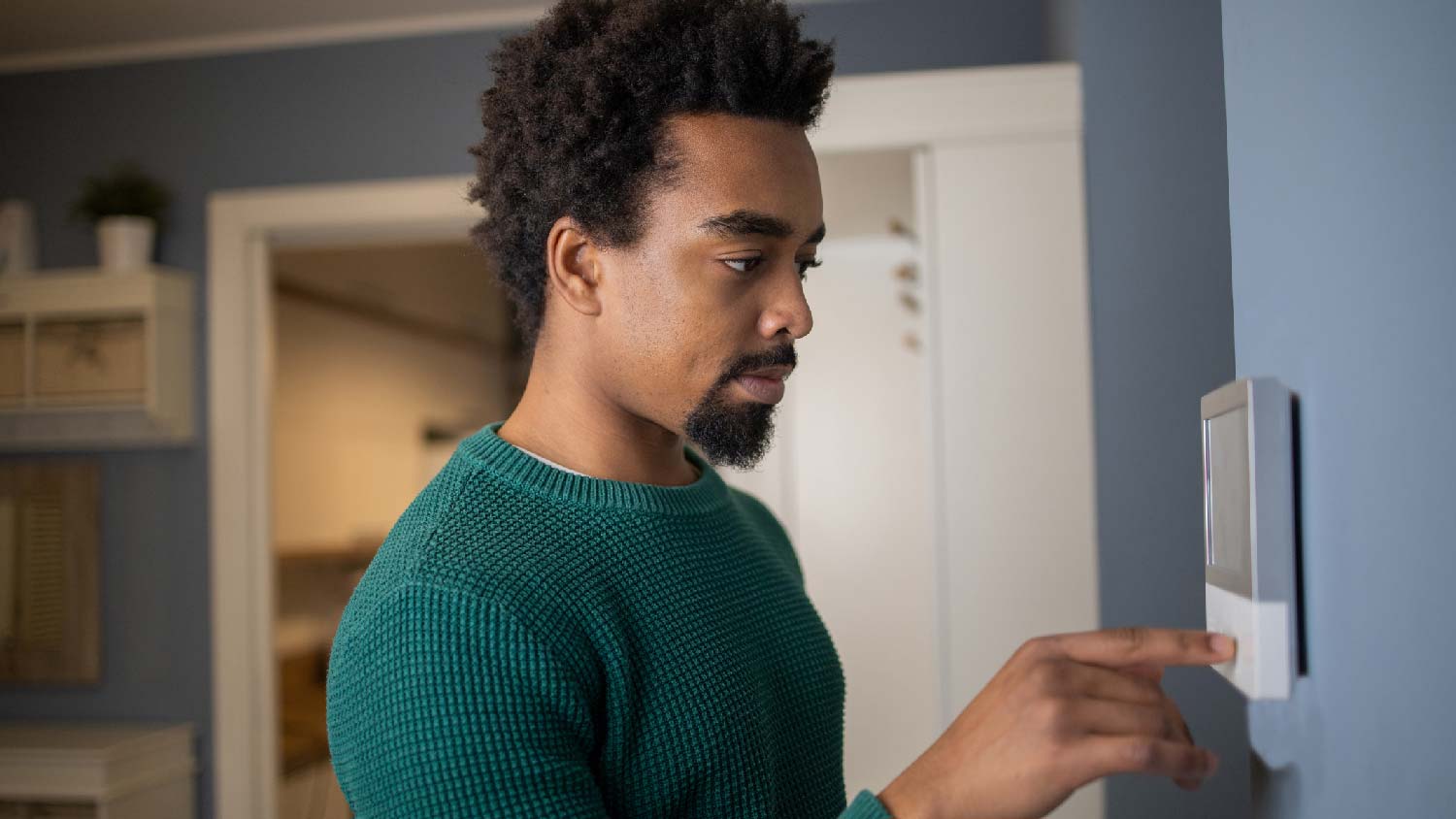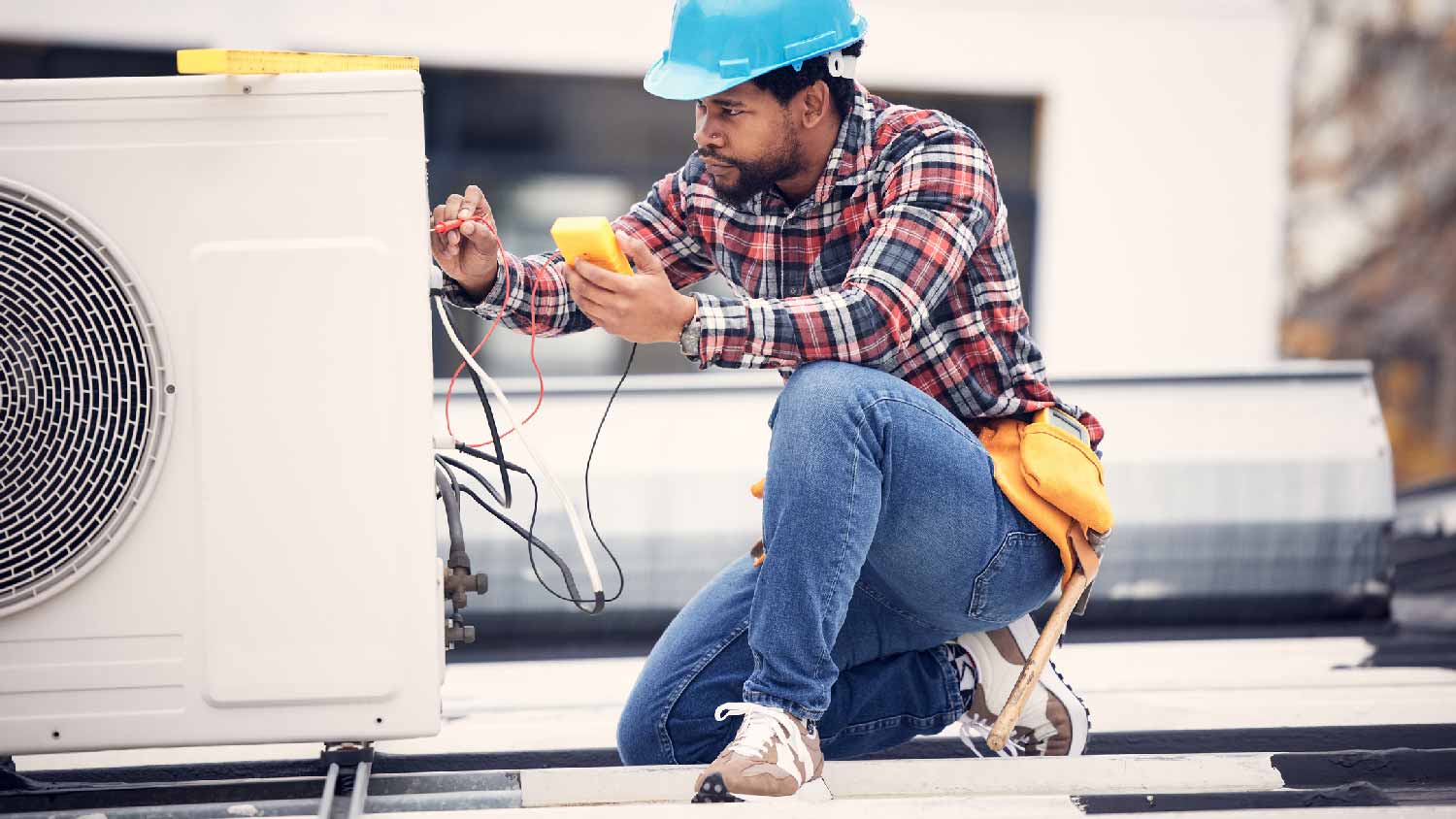4 Reasons There’s Air Coming Out of Vents When the AC Is Off in Your House
Take back control of your AC


Your air conditioning should only run when it’s set to “on” or “auto.”
You shouldn’t notice air coming from your vents when the AC is off.
If you do, there might be an issue with your thermostat or AC settings.
Alternatively, you might have a faulty contactor or bad wiring.
Contact an HVAC pro to identify and solve the problem.
It’s been weeks since you’ve used your air conditioning—so why is there air coming out of your vents when the AC is off? There could be a few issues at play, ranging from incorrect AC settings to a lousy thermostat to damaged wiring. Here are four of the most common reasons for air blowing out of your vents, as well as the next steps for fixing each one.
1. Your AC Is on the Wrong Setting
Let’s start with a simple explanation for why air comes out of your vents when the AC is off: Your air conditioner is on the incorrect setting.
Most modern units let you set your AC fan to “on” or “auto” to run your air conditioner. If your system is usually set to “auto,” it will turn itself on until your home reaches a certain temperature. Then, it will shut off on its own. However, if someone in your house switches your AC to the “on” setting, your system will run constantly and keep blowing air out of the vents until you change the setting to “auto” or “off.”
Because of this, it’s a good idea to review your AC settings and confirm that your system is off before you get deeper into the troubleshooting process.
2. Your Thermostat Isn’t Working Properly

Similarly, thermostat problems are another possible reason that air blows while your AC is off. Like the other parts of your HVAC system, your thermostat can wear down over time and require repairs. Sometimes, the solution might be as simple as changing the batteries or cleaning your thermostat. Other times, you might need a full replacement.
To figure out if your thermostat is the issue, make sure it has fresh batteries and then try using it as you normally would. After that, if there’s still air coming out of your vents or your thermostat won’t work, contact an HVAC professional to take a look at it. On average, a new thermostat costs between $110 and $260, with most people paying around $180.
3. Your Contactor Is Malfunctioning
Your contactor is an electrical component between your thermostat and the other parts of your AC unit, including your motor, compressor, and condenser. It works like a switch, controlling the supply of electricity into the unit. During a cooling cycle, the contactor allows electricity into the unit to run and cool your home. Then, when the air conditioning is off, the contactor prevents electricity from entering your AC unit.
Over time, your contactor can collect dirt, attract insects, or get stuck in a certain position. As a result, it may stop working properly—which can force air out of your vents even when your AC is off. Even worse? If you don’t fix it, the constant flow of electricity can put unnecessary strain on your HVAC system and increase your energy bills.
If there’s a problem with your contactor, you might hear a clicking noise coming from your AC unit. At this point, you’ll need to contact an HVAC pro to diagnose and fix the issue.
4. There’s a Wiring Issue

In an HVAC system, wires distribute electricity to various parts of the system. With repeated use, these wires may become damaged or get disconnected, which can interrupt the flow of electricity between certain components of your HVAC system.
For example, let’s say some of the wires between your thermostat and AC unit are frayed, which causes your system to short-circuit. When this happens, your AC unit probably won’t receive the signals your thermostat is trying to send (for instance, to shut off). This could cause several problems, including air coming out of your vents when the AC is off.
If you have this issue, you may see damaged wires or notice a burning smell when your AC runs. Either way, you should stop using your AC and call an electrician or HVAC expert as soon as possible.
Tips to Keep Your AC Running Smoothly
With regular maintenance, you can prevent many common air conditioner problems—or at least detect them before they become much more expensive to fix. Here are some tips to keep in mind.
Change dirty air filters. Replacing your old air filters is one of the simplest ways to protect your HVAC system. Aim to swap out your filters every one to three months. Depending on the type of filters you use, this generally costs between $10 and $50.
Clean your air ducts as needed. The Environmental Protection Agency (EPA) recommends cleaning your air ducts if there’s evidence of excessive debris, mold, mildew, or vermin. In most cases, professional air duct cleaning costs around $380, but it can range between $270 and $490.
Have your AC serviced. It’s important to service your AC at least once per year (ideally, in spring) to keep it in good shape. Experts also suggest having your system inspected in the fall as well. A service visit usually costs about $150.
DIY vs. Hiring a Pro
Some of these problems—like checking your AC settings and thermostat—are easy to address on your own. Beyond that, though, it’s best to bring in an expert because HVAC repairs can be complicated and risky since they often involve working with electricity, refrigerant chemicals, and tight spaces.
Depending on what’s causing air to leak out of your vents, you may need to replace parts of your AC unit, thermostat, or ductwork. Hiring an HVAC technician can help you pinpoint the issue and let you know if you need to hire another specialist, like a local duct installer.
While air duct cleaning hasn’t been proven to prevent respiratory problems, it’s not a scam. While it’s unlikely that dirty ducts are solely responsible for poor air quality, they may be a contributor. Homes with very low air quality or residents sensitive to dust or mold would likely benefit from a duct cleaning.
Frequently Asked Questions
Several things could be signs that your thermostat is bad. For starters, if your thermostat is unresponsive or won’t turn on, it’s probably faulty. You might also have an issue if the temperature inside your house doesn’t match what’s on your thermostat or if your HVAC system won’t respond to your thermostat.
On average, most AC units last 10 to 20 years. However, this can vary depending on the type of air conditioning you have. For instance, central AC usually lasts for about 12 to 17 years. Window AC units have a much shorter lifespan, typically lasting between eight and 10 years.
You might have heard that closing vents in unused rooms can help with energy efficiency, but it’s never a good idea to block air vents completely. Fully closing vents can create a buildup of pressure inside your ducts, which can lead to leaks, holes, or other problems. Instead, you can shut your vents partially (between 50% and 75%) in unoccupied parts of your home.





- Furnace Repair
- Air Conditioning Repair
- HVAC Repairs
- Furnace Installation
- Wood & Pellet Stove Repair
- Dehumidifier & Humidifier Repair
- Heat Pump Companies
- Swamp Cooler Repair
- Wood Stove Services
- HVAC Companies
- Commercial A/C Repair
- Geothermal Installation
- Air Conditioning Installation
- Boiler Repair
- 24 Hour Furnace Repair
- Geothermal Repair
- Heat Pump Repair
- Humidifier Installation
- Thermostat Repair
- Thermostat Installation
- Nest Installation
- Heating & Cooling
- Heating Repair
- Furnace Cleaning
- Furnace Tune-Up
- HVAC Technicians
- Subcontractors
- Furnace Maintenance
- Plumbing & Heating Companies
- Wood Stove Inspection
- Mini Split Installation
- Wall Heater Repair
- Duct Installers
- 7 Common Reasons Why Your AC Stopped Working (and How to Fix It)
- Why Is the Outside AC Unit Not Turning On, But the Inside Is? 9 Common Reasons
- What Is the Best Temperature to Set Your Air Conditioner to in the Summer?
- The Best Time to Buy an Air Conditioner
- Should You Cover Your Air Conditioner in the Winter? Everything to Know
- Problems With Your AC Unit? Here’s When To Call HVAC Repair
- How to Pick the Right Window Air Conditioner Size for Your Home
- Signs of AC Freon Leaks and What You Should Do
- Breathe Easy: 10 Tips for Improving Your Indoor Air Quality
- Can I Run My AC Without a Filter? 5 Reasons It Might Not Be the Best Idea











